作物基因工程的总体目标是对现有作物进行有益的改良。初创公司Arvegenix的开发团队 致力于将杂草 Field Pennycress(Thlaspi arvense)转化为有用的多功能产品。竹enny自然地居住在耕地和荒地中,其内在价值非常有限。Arvegenix正在利用植物育种和基因组学技术开发一种被称为Covercress的仙女变种。它是为中西部农民设计的,他们通常从春季末到夏季轮流种植玉米/大豆/玉米,然后在秋季和冬季不使用土地(机会错失)。
新工厂设计有多种用途:
充当农作物,保护裸露的土地免受侵蚀和养分流失;
本身用作新的可收获商品,而不影响现有的农作物轮作。处理该植物将产生:
适用于色拉调料的油,类似于低芥酸菜子,并用作燃料来源;和一顿蛋白质含量> 40%的膳食,适合用作动物饲料补充剂。
天然的豆瓣菜无法产生这些有用的产品,因此Arvegenix会培育出新的变种并选择具有更理想特性的后代。一旦确定了改进,就需要某种方法来跟踪从一代到下一代,因为并非下一批种子都具有该特性。在作物发展方面,Arvegenix与John Sedbrook的实验室合作是伊利诺伊州立大学(Illinois State University)领先的研究者,他是女巫遗传转化的先驱。John的实验室能够成功地使用zui初源自海洋无脊椎动物的红色荧光蛋白(RFP)作为遗传传递的视觉标记。带有此视觉标记的任何种子和植物在用适当的光源照射时都会发出明显的红色。John的实验室在此部分操作中使用了美国nightsea DFP-1双荧光蛋白手电筒及其相关的荧光拍照滤镜。您可以在下面的图片中看到此技术的简便性和价值。
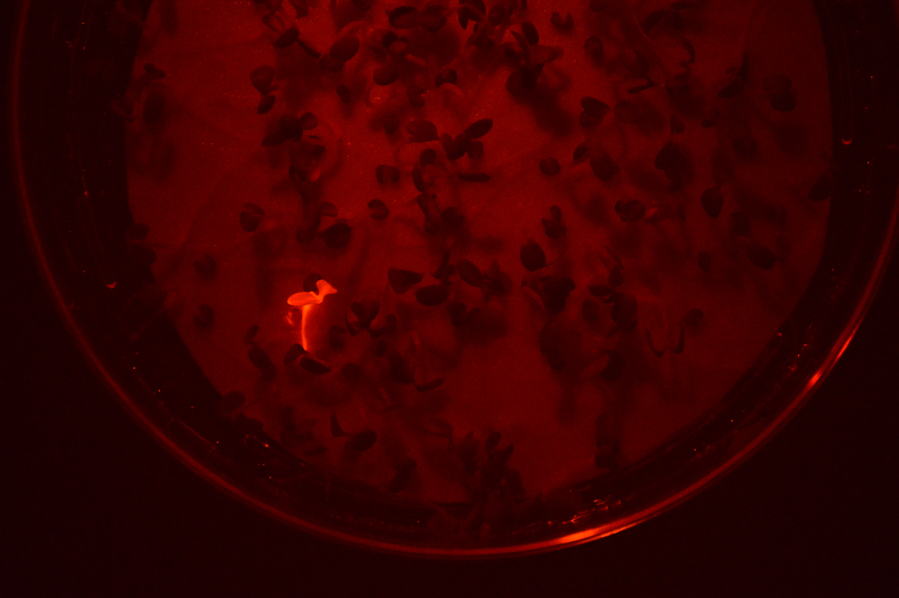 使用NIGHTSEA DFP识别表达红色荧光蛋白的幼苗
使用NIGHTSEA DFP识别表达红色荧光蛋白的幼苗
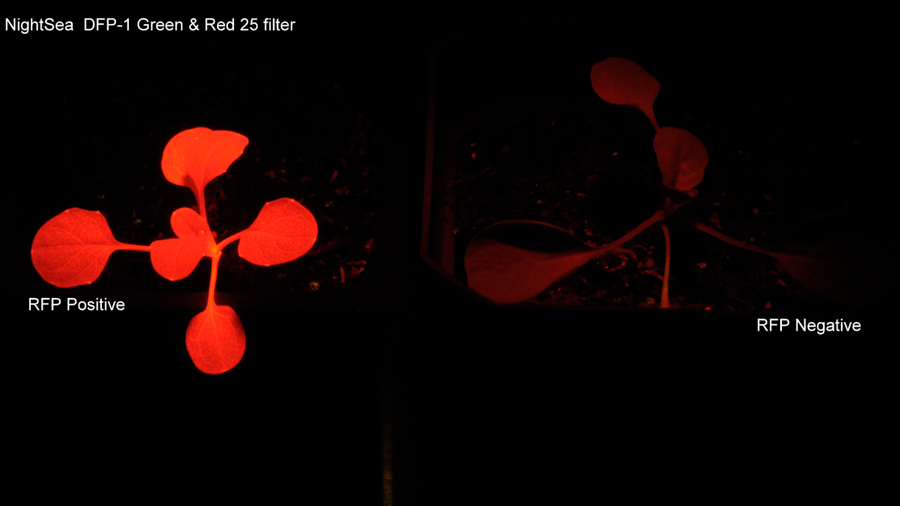
RFP阳性和阴性幼苗的荧光图像
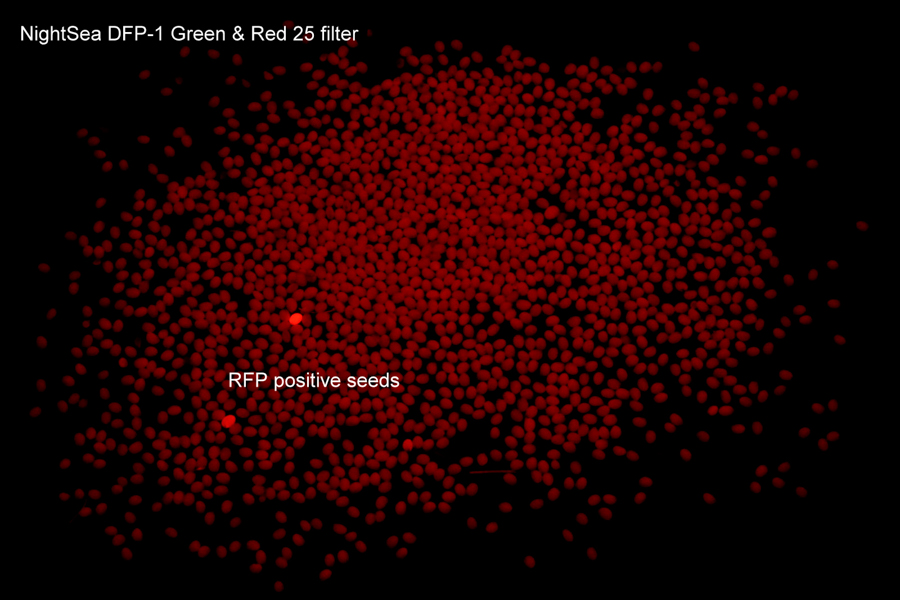
RFP阳性和阴性黄色种子的荧光图像
Crop Genetic Engineering and Fluorescence
Crop genetic engineering has the general goal of making useful improvements in existing crops. The development team at startup Arvegenix is aiming to transform a weed, Field Pennycress (Thlaspi arvense), into a useful, multifunctional product. Pennycress naturally populates both cultivated land and wasteland and has very limited intrinsic value. Arvegenix is using plant breeding and genomics techniques to develop a variant of pennycress that they call covercress. It is designed for Midwest farmers who typically grow corn/soybeans/corn in rotation from the late spring through the summer, with the land then going unused in the fall and winter (a lost opportunity).
The new plant is designed to have multiple uses:
Act as a cover crop, protecting otherwise bare fields from erosion and nutrient loss;
Serve as a new harvestable commodity in itself, without affecting the existing crop rotation. Processing the plant would produce:
an oil suitable for use in salad dressings, similar to canola, and as a fuel source; and
a meal with >40% protein, suitable for use as an animal feed supplement.
Natural pennycress cannot yield these useful products, so Arvegenix breeds new variants and selects offspring with more desirable properties. Once an improvement is identified there needs to be some way to track it from one generation to the next, since not all of the next batch of seeds will carry that trait. In its crop development efforts, Arvegenix has collaborated with the laboratory of John Sedbrook, a leading pennycress researcher at Illinois State University, who has pioneered genetic transformation of pennycress. John’s lab was able to successfully use a red-fluorescent protein (RFP) originally derived from a marine invertebrate as a genetically transmitted visual marker. Any seeds and plants that carry this visual marker will glow distinctively red when illuminated with an appropriate light source. John’s lab is using the NIGHTSEA Model DFP-1 Dual Fluorescent Protein Flashlight with its associated filter glasses for this part of the operation. You can see the ease and value of this technique in the images below.
Reference: McGinn, M., Phippen, W. B., Chopra, R., Bansal, S., Jarvis, B. A., Phippen, M. E., … & Durrett, T. P. (2018). Molecular tools enabling pennycress (Thlaspi arvense) as a model plant and oilseed cash cover crop. Plant Biotechnology Journal. doi: 10.1111/pbi.13014




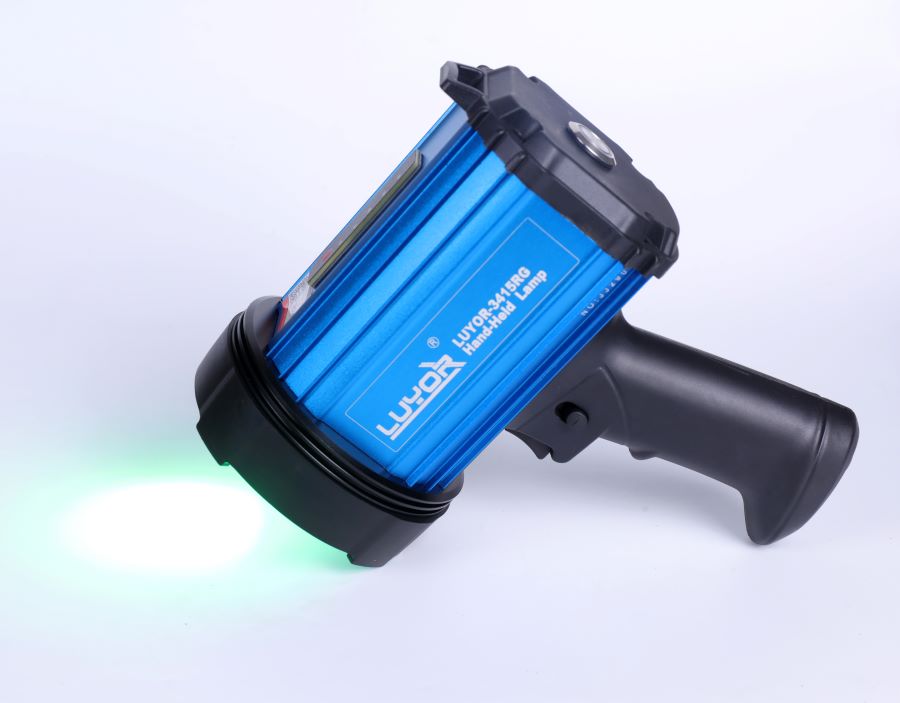
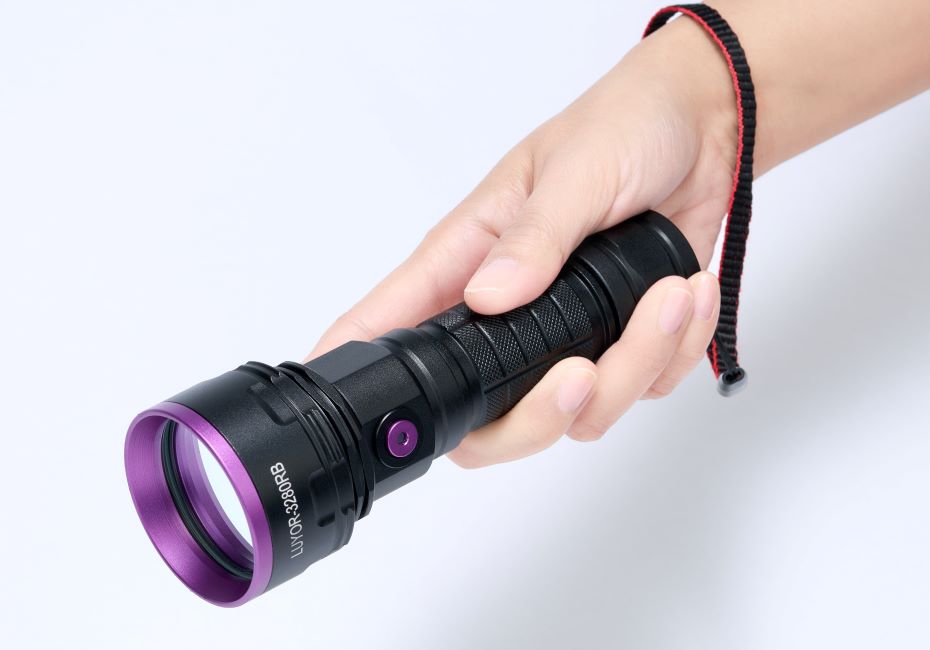

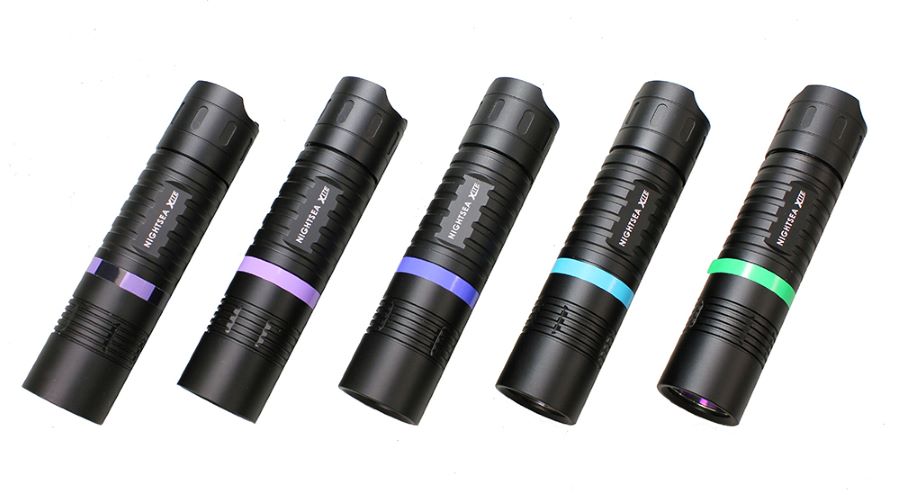
 添加微信咨询!
添加微信咨询!